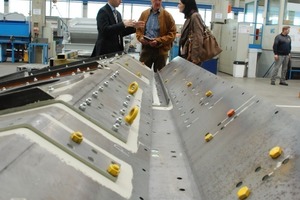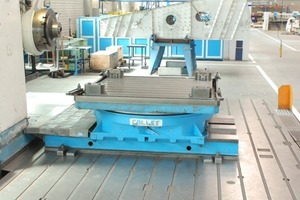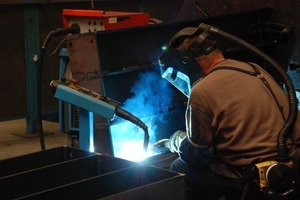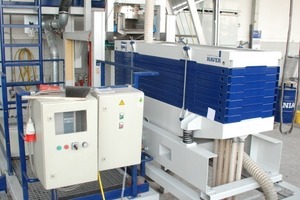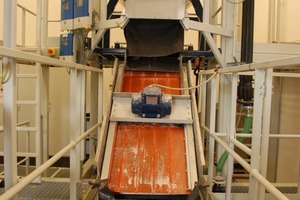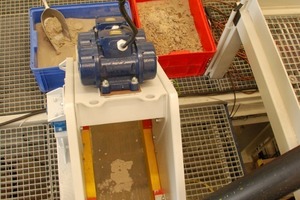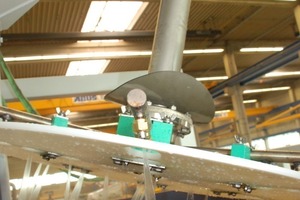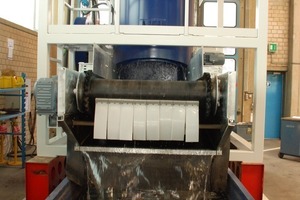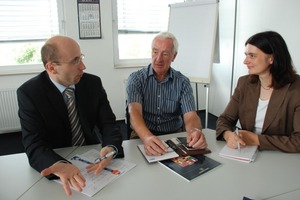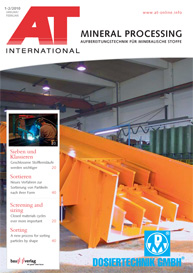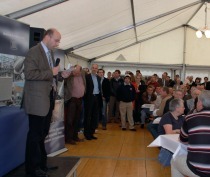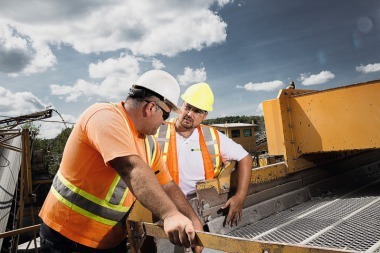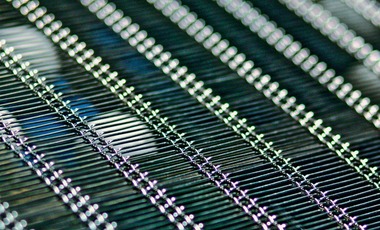„Closed material cycles ever more important“
In September, 2009, HAVER & BOECKER celebrated the fortieth anniversary of the opening of its Münster plant. The Oelde-based company purchased the J.A. Braun Landmaschinenfabrik agricultural machinery works in Münster in 1969, due to a lack of space in Oelde. The new location enabled HAVER & BOECKER to expand its production capacities, with the new facility providing individual components and assemblies for the parent site in Oelde for the first two decades. After about twenty years, in 1989, space in Oelde for the production of screening and packing machines, with their differing production methods, was again becoming scarce, and a decision was made to relocate all mechanical-screen production activities to Münster; the appurtenant marketing and design departments followed in the early nineties. The AT INTERNATIONAL editorial team took the opportunity during the anniversary celebrations to interview Olaf Drusche, head of the Mineral Processing Technology division, and Günther Lakenbrink, a HAVER & BOECKER employee from 1951 to 1998, who still clearly remembers the move in 1991.
AT: Why Münster, precisely?
Lakenbrink: Toward the end of the sixties, Oelde was becoming overstretched both in terms of space and of the available machinery. A site came up for sale in Münster, and the CEO at the time very quickly decided in favour of buying it. All the J.A. Braun employees were kept on, and were very glad indeed to be able to continue working, under new and highly competent management. In those days, it was very unusual for a family-owned company to branch out so far from its origins – Oelde was known, primarily, as a wire weaving plant. But Münster developed from being a sub-supplier for Oelde into an all-in mechanical-engineering plant, with more and more complete units being produced, for both the minerals processing and the cement sectors. By 1990, capacity at Oelde was yet again becoming scarce, and the best solution was to relocate a complete division. After forty years at Oelde, for example, I myself worked in Münster until I retired. An important point was that the people at Münster could then identify much more closely with their work - they saw the production process through from the start to the finished product.
AT: How were the individual items transported between the two locations?
Lakenbrink: That wasn‘t really a problem, they came via truck.
AT: And how is the cooperation between Münster and Oelde organized? Münster must surely have become much more independent over the years?
Drusche: Yes, of course – we produce here, in Münster, but make use of the central warehouse facilities at Oelde. All design and production activities are based here, with Innovation Management presently located in Oelde. We also have a technology testing facility here in Münster, which we use to support machine design. We intend to upgrade the test facility to an R&D center, so that the results obtained from innovation management can be incorporated straight into prototype machines – that makes it possible, for example, to determine the specific wear on various screen deck types when used with various materials.
AT: The entire vibrating screen department moved to Münster in 1990 – did this mean any changes for production?
Lakenbrink: After the reunification of Germany, lots of companies expanded their facilities – there was a boom in demand for large machines. The new site in Münster gave us ideal conditions for reorganizing production – here, we were able to make both larger and heavier machines, in greater numbers. The mechanical-engineering plant achieved record figures for orders and turnover during that period.
AT: What new machines were developed, and what new applications opened up?
Drusche: Over the years, we have, of course, developed new machines here, such as the HAVER NIAGARA Fine Line and HAVER NIAGARA Speed Line series, and the HAVER Hydro-Clean®. Development of new products is one of HAVER & BOECKER‘s strengths, it enables us to bring the very latest technologies to the market, and to reorientate. The pelletizing disc, for example, will open up new sectors of mineral preparation and processing for us – that’s another new development that we‘ll be unveiling at the 2010 Bauma fair.
Lakenbrink: Yes, and customers also come to us with new ideas, and the short communication routes here also help
us in putting these ideas into practical use as quickly as possible.
AT: When you look back on the past forty years, what have been the highlights?
Drusche: Our data-processing department was inaugurated in 1974, and CAD systems were installed. Nowadays, the 3D drawings are drafted by computer – which was a very significant change in design practice – goodbye to the drawing board! At that time, this was quite a novelty, and it enabled us, as a smaller company, to implement innovations much more quickly, in a lot of cases.
Lakenbrink: On the subject of challenges, lots of small steps – and good coordination, are necessary to meet customers’ special wishes, in particular, in order that we can keep our delivery promises.
AT: Has the location grown continuously?
Drusche: There’s been a significant change in the marketing concept in the last few years – we used to concentrate mainly on Western Europe, whereas now, we‘re active around the world. Peter Grotjohann, Head of the Mineral Processing Technology Division, refined this concept - three locations producing mechanical screens serve the worldwide market – HAVER & BOECKER Maschinenfabrik Münster, HAVER & BOECKER Latinoamericana and W. S. Tyler Canada, those are the three companies that make up the HAVER SCREENING GROUP.
AT: And where is development heading?
Drusche: We all know that mineral reserves and deposits are not infinite, and the quality of the minerals extracted will drop. Mechanical screens will get larger, and the demands made on the end product greater. All this means that we will have to concentrate much more on design, on screening machines and requirements, and on the individual applications and customer wishes. Washing of rock and minerals will also increase in significance, as we‘ve seen with our HAVER Hydro-Clean®. And closed material cycles are becoming increasingly important.
Lakenbrink: There are new demands now, and the traditional screening process is developing ever more toward classifying, and we have to work even better, more precisely, and to new standards.
AT: Which are the main sectors that use your mechanical screens?
Drusche: The mineral resources industries, building and building materials, cement plants, and mining. But we‘ve also supplied screens for the fertilizer industry, as well as for the chemical and feedstuff industries. The screens made in Brazil are mostly supplied to the ore industry.
AT: In what regions are you most heavily represented?
Drusche: We export around 70 % of our production, and the trend is upward. We‘re represented by affiliated companies in Brazil and Canada. The main markets for mineral processing machines and systems are, essentially, in Europe, North Africa and Asia, but we have also just received a major order from Russia. We focus, in general, on growth markets, and it‘s HAVER & BOECKER policy to set up subsidiaries which initially handle only sales and marketing, but later move on to service and even their own production.
Lakenbrink: Close coordination with the subsidiaries is always necessary, there are many details which cannot simply be translated 1:1.
AT: How badly has the Münster location been hit by the present crisis?
Drusche: Oh, things are looking pretty good for us! We were the first in the group to start short-time working, and the first to go back to full-time. As of the end of 2009, we have a good order situation – mineral processing, up to now, was rarely at the forefront, and now we‘ve got the best new order figures! It‘s also a big advantage for us that we supply so many different sectors.
AT: And how does 2010 look for you?
Drusche: The year will be difficult, there are many provisions that can be used only once. But we are extremely well positioned – we are not overstaffed, and it’s more a question of making sure we fulfill our orders. I don‘t think we‘ll need to make any other adjustments.
AT: And what direction will THE HAVER SCREENING GROUP development take in the future?
Drusche: Customers increasingly want everything from a single source, they don’t want to deal at the individual component level. Many firms have very restricted departments handling the engineering – but customers want a complete system at a fair price.
AT: Herr Lakenbrink, what advice would you give the next generation?
Lakenbrink: I’d advise them to be receptive to all signals, accept challenges, absolutely everything – and to try out everything that‘s doable. And, during training, in particular, ask questions, because later it’s much more difficult ...
AT: Many thanks for this interesting and frank discussion.

